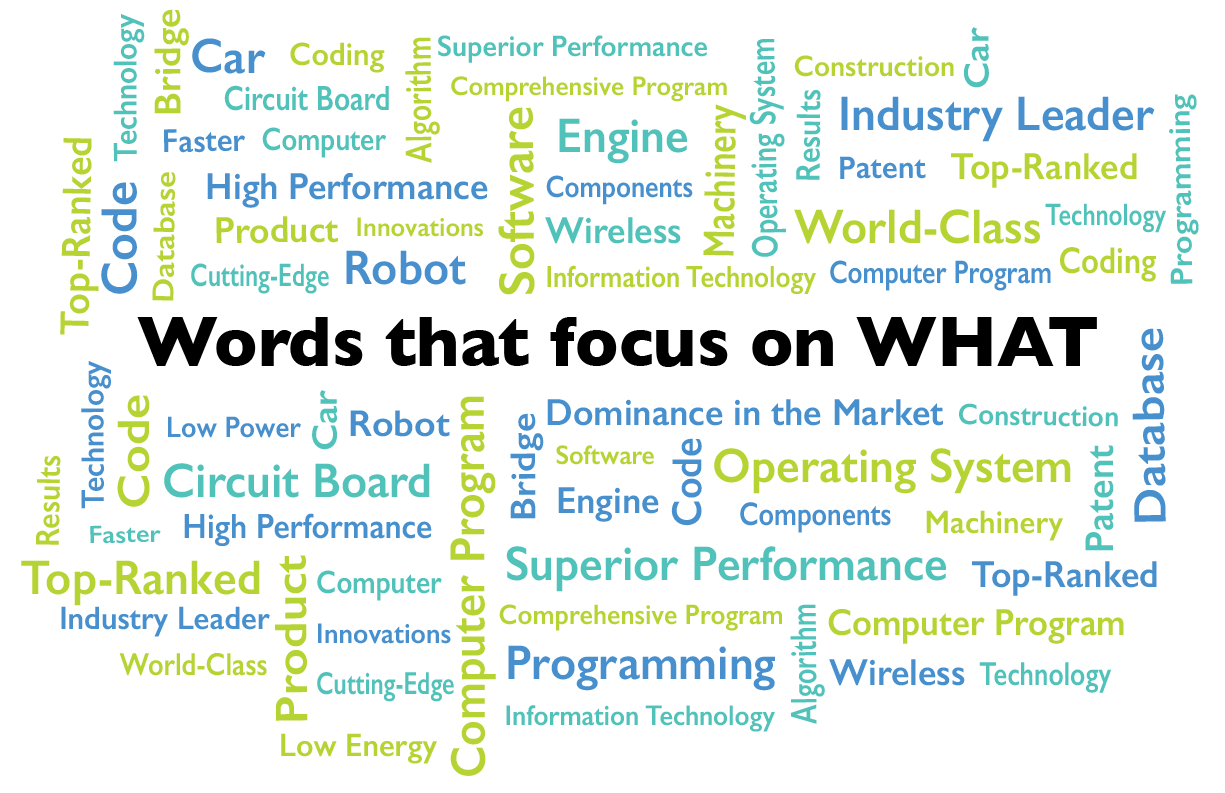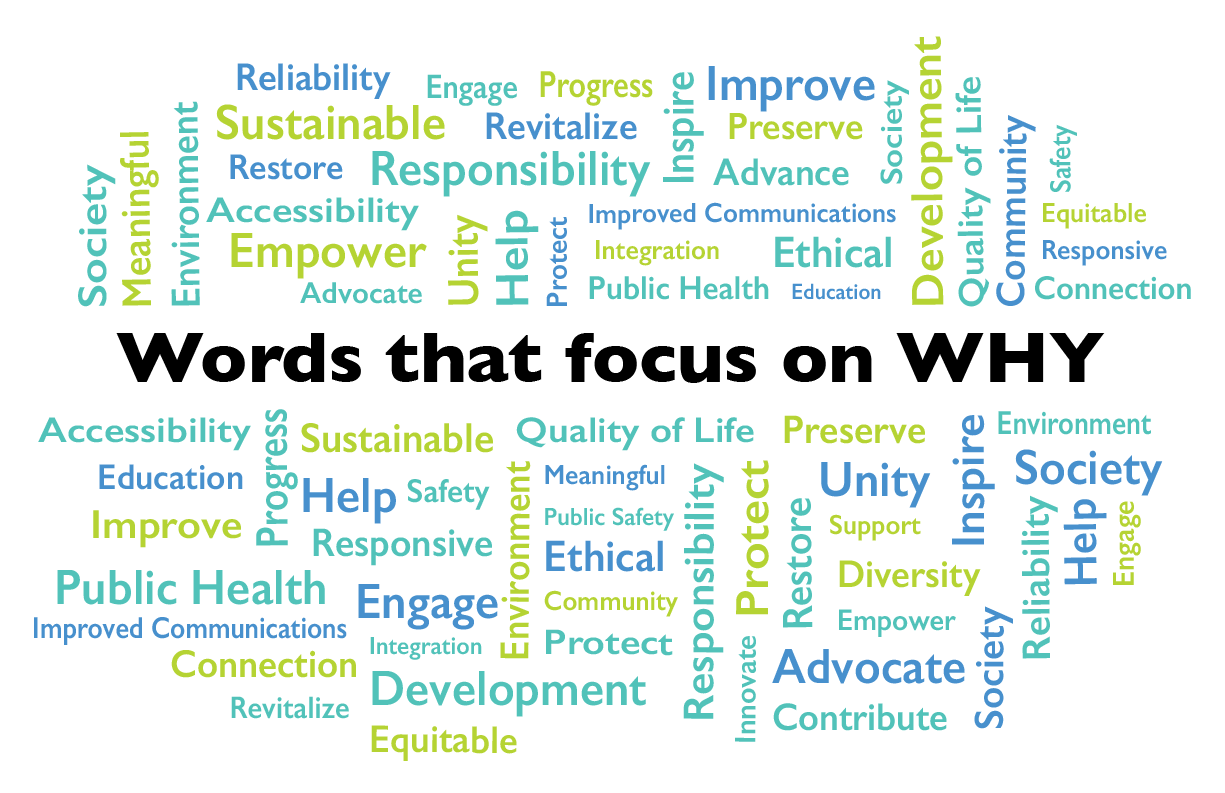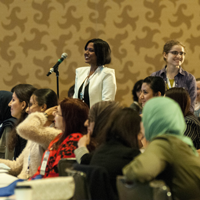Want to Encourage Gender Diversity? Choose Your Words WISEly
In recent decades, there have been many Women In Science and Engineering (WISE) initiatives aimed at increasing the participation of women in these fields. In computer science and engineering, the percentage of women pursuing degrees and careers has remained relatively low. According to CRA’s annual Taulbee Survey of Ph.D. granting institutions, less than 15 percent of undergraduate computer science degrees were awarded to women in the 2013-14 academic year [1]. Given the significant increases of women in other traditionally male dominated fields such as law and medicine in the past 50 years [2], computing’s persistent low representation of women is rather disappointing, to say the least. Women’s low participation is also alarming when we consider the increasing number of jobs in computing, as well as the positive impact of improving gender diversity on innovation in research settings [3] and on collective intelligence [4]. So the question becomes, how do we change things?
While there are likely many contributing factors, I would argue that one of the key challenges is how computing degrees and careers are perceived by society at large. A recent study in Canada has found that parents are the primary influencers of their daughters’ educational pursuits, and teachers are the second major source of influence [5]. Since most children do not grow up in a household where a parent has a computing or engineering background, we have to think about how we describe computing degrees to potential students, as well as to their parents and teachers.
Gendered Language
Imagery and words have a powerful impact on people, informing both what they think and how they feel. Research has shown that the words we use to convey information are extremely important to how that information is perceived by its audience. While we have significantly changed the optics of computing with imagery that is diverse in gender and race, how much has the way we talked about it changed?
Not surprisingly, English contains gendered language, with “he” and “she” being obvious examples, and there is experimental evidence indicating that the use of gender-exclusive language in professional settings can be demoralizing for the excluded gender [6]. However, using gender inclusive language (e.g. “she or he”) or gender-neutral language (e.g. “they”) in professional settings, can equalize women and men’s sense of belonging and motivation [6 (see Study 2)].

Figure 1: Focusing on what aspects or criteria of technology to improve is appealing to agentic individuals.
There are also many other words in the English language that have a perceived gender based on gender stereotypes; how you use these words can subtly signal to your audience who does (and does not) fit in. Words that are typically seen as “feminine” reflect the stereotype that women are more communal (i.e. considerate, polite, responsible, understanding) and words typically thought to be “masculine” reflect the stereotype that men are more agentic (i.e. ambitious, analytical, logical, self-sufficient) [6][7].
When a job advertisement contains more agentic language, it can negatively impact a woman’s decision to apply for a job [7]. Conversely, increasing the amount of communal language in a job description will increase a woman’s interest in applying – without negatively impacting a man’s interest in applying [8]. While changing the wording of job advertisements has the potential to reduce the “leaks” in the pipeline from university to industry, this does not solve the real problem: on average, the number of women applying for entry to computing degree programs in North American schools is well under 20%.
I believe this concept should be applied to how we describe our academic programs to potential students, as well as their parents and teachers. As an experiment, randomly select a few different computing and engineering program recruitment webpages. How much communal language is readily apparent in these descriptions? How much of the focus is on the technology itself – the things or “what” if you will?
For example, even though I am a computer engineer, I have always enjoyed literature, math, music, history, and art. Before I started my bachelor’s degree, I had no background in this field; I could not have told you what a “prompt” was. As such, telling me I would learn how to make a faster processor or a better operating system, easy recruiting statements to describe computing careers, would not have been particularly interesting or motivating.
Instead, telling me that studying computing would provide me with the opportunity to use technology to solve interesting problems that help improve society (e.g. advances in medical technology) is much more inspiring. These are the “whys” of computing science and engineering, which appeal to the same people who are attracted to communal language in job ads. Computing technology has become the underlying backbone of our society; communicating why computing degrees are important and how prospective students can help change the world they live in is more engaging and inspiring – while having the important benefit of being true.

Figure 2: Providing a social context as to why improving technology is important is more appealing to communal individuals while still appealing to agentic individuals.
Three simple things you can do to increase gender diversity?
1) Revisit your website and marketing materials. You cannot avoid using any agentic language in describing a computing degree- and you should not try. However, make it accessible, remembering that this audience may have a non-technical background; ensure that there is a balance of agentic and communal language so that both girls and their advocates (i.e. teachers and parents) see how these programs and careers are exciting opportunities for women.
2) Encourage recruiters to focus on the “why” of computing and less on the “what.” Computer science and engineering programs are already recruiting the men and women who respond to agentic language; now it is time to open it up to a broader audience and recruit those who are of a more communal persuasion and want to know “why.”
3) Get involved in your community (e.g. science fairs, school visits) to increase awareness of computing careers. When you describe computing careers, focus on the fact that they generally require individuals to work in teams to find creative solutions to interesting problems. Note how solving these problems generally improve people’s quality of life, protect the environment, etc. Highlight the fact that computing requires creativity and teamwork and how having strong communication skills is a valuable asset.
In closing
Remember the age-old adage: “Be careful what you ask for, you just might get it!” Therefore the question we should all be considering is: Are we getting what we asked for, even if it is not what we want? If so, perhaps it is time to choose our words more WISEly and ask for something different.
About the Author:
Dr. Lesley Shannon, P.Eng. is an associate professor and chair for the Computer Engineering Option in the School of Engineering Science at Simon Fraser University. Shannon’s research is in reconfigurable and heterogeneous computing. She also holds the NSERC Chair for Women in Science and Engineering (BC/Yukon) which operates as Westcoast Women in Science, Engineering and Technology (WWEST). Over the next few years, WWEST will be working with parents and teachers, and post-secondary institutions to change the way we describe computing degree programs and potential careers to students. To find out more, please visit WWEST.ca and subscribe to the newsletter.
References
[1] Zweben, S. & Bizot, E., (2015). 2014 Taulbee Survey. Computing Research News. Retrieved from https://cra.org/wp-content/uploads/2015/06/2014-Taulbee-Survey.pdf.
[2] Cohen, P. (2012). More Women Are Doctors and Lawyers Than Ever—but Progress Is Stalling. The Atlantic. Retrieved from http://www.theatlantic.com/sexes/archive/2012/12/more-women-are-doctors-and-lawyers-than-ever-but-progress-is-stalling/266115/.
[3] Diaz-Garcia, C., Gonzalez-Moreno, A., & Saez-Martinez, F.J. (2013). Gender diversity within R&D teams: Its impact on radicalness of innovation. Innovation: Management, Policy, & Practice, 15(2), 149- 160.
[4] Woolley, A., Malone, T. & Berinato, (2011). What makes a team smarter? More women. Harvard Business Review, 89 (6), 32-33. Retrieved from http://hbr.org/2011/06/defend-your-research-what-makes-a-team-smarter-more-women/ar/1.
[5] Let’s Talk Science and Amgen Canada. (2014). Spotlight on science learning: Shaping tomorrow’s workforce – what do Canada’s teens think about their future? Retrieved from http://www.letstalkscience.ca/research-publications/publications-by-year.html
[6] Stout, J. G., & Dasgupta, N. (2011). When he doesn’t mean you: Gender-exclusive language as ostracism. Personality and Social Psychology Bulletin, 37(6), 757-769.
[7] Rudman, L. & Glick, P. (2001). Prescriptive gender stereotypes and backlash toward agentic women. Journal of Social Issues, 57(4), 743-762.
[8] Gaucher, D., Friesen, J. & Kay, A. (2011). Evidence that gendered wording in job advertisements exists and sustains gender inequality. Journal of Personality and Social Psychology, 101(1), 109-128.
[9] Rudman, L. & Glick, P. (1999). Feminized management and backlash toward agentic women: The hidden cost to women of a kinder, gentler image of middle managers. Journal of Personality and Social Psychology, 77(5), 1004-1010.









